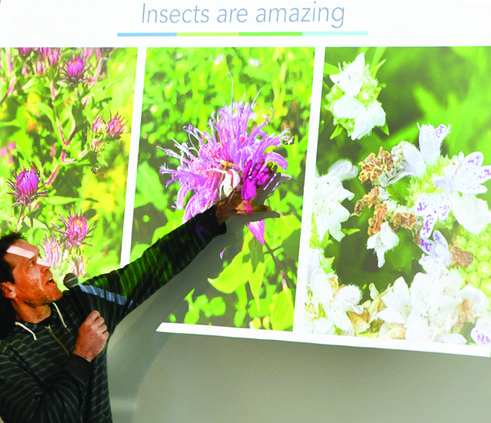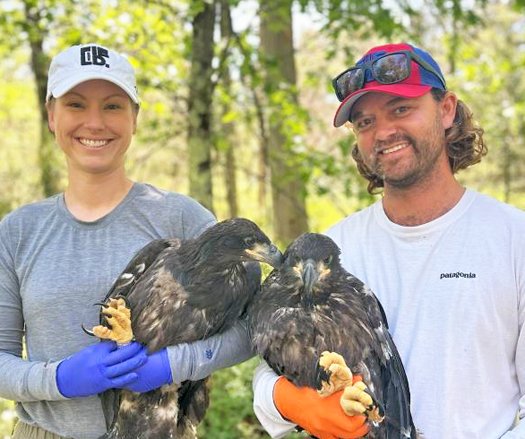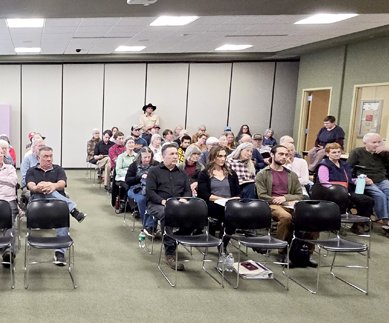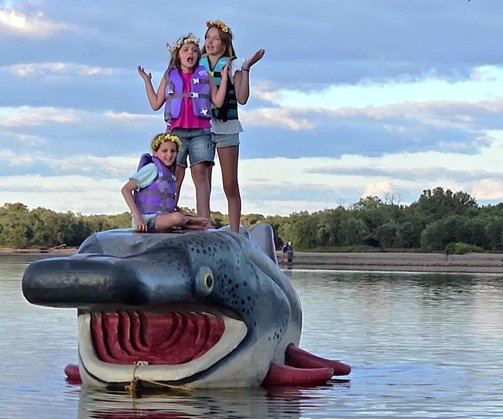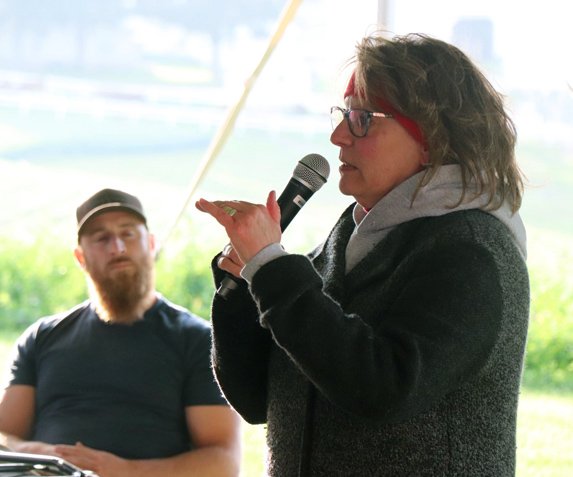Despite the beautiful spring weather last Saturday, more than 60 citizens chose to attend a presentation about ‘Pocket Prairies,’ provided by Micah Kloppennburg of the Xerces Society. The event took place in the Community Commerce Center in Gays Mills, and groups such as Prairie Enthusiasts, Valley Stewardship Network, and more had informational booths to provide additional resources.
Kloppenburg explained that ‘Xerces’ is the name of the first species of bees to go extinct.
According to their website, “the Xerces Society for Invertebrate Conservation is an international nonprofit organization that protects the natural world through the conservation of invertebrates and their habitats. As a science-based organization, we both conduct our own research and rely upon the most up-to-date information to guide our conservation work. Our key program areas are: pollinator conservation, endangered species conservation, and reducing pesticide use and impacts.”
“The key take away of my presentation is that insects are amazing,” Kloppenburg said. “If you take a walk with an insect enthusiast, you will walk slowly, taking a privileged minute to really take a close look. Many insects are teeny-tiny, and without paying close attention, may be almost invisible to the eye.”
Insect decline
Kloppenburg apologized to the audience for showing them a ‘depressing’ slide about the decline in insect populations. He noted that reasons for the decline are complex, and include loss of habitat, climate change, and the broad use insecticides, herbicides and pesticides in agricultural production.
One species, once abundant and familiar on the landscape, has been in a population freefall since the mid-1990s. That species is the monarch butterfly, whose population by 2014 had fallen 90 percent in just 20 years. This led to a coalition, including the Xerces Society, to file a petition with U.S. Fish & Wildlife Service (USFWS) seeking Endangered Species Act protection for them. In 2024, USFWS made the proposal, with public comments on the proposal accepted until March 12, 2025.
Kloppenburg said that there are an estimated 18,000 to 20,000 insect species in Wisconsin, including 1,388 named species of butterflies and moths, more than 450 species of bees, and beetles, wasps, and flower flies. Among these insects are four federally endangered insects: Rusty Patched Bumble Bee, Karner Blue Butterfly, Hine’s Emeral Dragonfly and Powshiek Skipperling.
“Insects are resilient, and they can recover their populations if the right conditions are present,” Kloppenburg said. “Among the most crucial of those conditions is available, suitable habitat, and the absence of agricultural chemicals.
How to help
Kloppenburg showed a sequence of images of Crawford County’s dominant land cover from about the 1200s to today. In the 1200-1300s, he said the landscape would have been dominated oak, oak openings and prairie, and shaped under the influence of fire.
He noted that today, globally, about a third of the land on the planet is used for agriculture, and in Crawford County, we have thickly forested, steep slopes, with a dense 90% tree canopy.
“The only real remaining prairie in Crawford County is the goat prairies, which are remnants of the ancient open grassland system,” Kloppenburg said. “That is why creation of pocket prairies becomes all the more crucial, and can be done at different scales in both rural and urban settings.”
A pocket prairie is defined as a small, designed planting area, typically under one acre, featuring native grasses and wildflowers.
“We encourage people to maintain what habitat they can in their spaces, and help to create an interwoven life space for pollinators,” Kloppenburg explained. “Another option is to volunteer with groups like the Prairie Enthusiasts to help them maintain existing prarie restorations.”
Why prairie?
Kloppenburg said that a “pollinator’s view of the world” is that there are three things that they need - flowers for food, space for nesting, and a pesticide free habitat. He said that 30% of pollinators nest above ground in hollow stems, and 70% nest below ground in cavities.
“Some pollinators are generalists, but others are specialists and rely on a particular plant species,” Kloppenburg explained. “For instance, for the endangered Karner Blue Butterfly, wild lupine is their preferred food, and for the monarch butterfly, it is milkweed.”
Kloppenburg said that planting a mix of flowers and grasses will provide a diverse habitat suitable for a variety of pollinators. Because some species are specialists, planting native species can be the best way to ensure these pollinators have the food they require.
Planting options
Kloppenburg explained that planting considerations will be different for smaller, urban installations versus larger, rural ones. For the smaller planting, he said you may want to start with ‘plugs’ or bedding plants, but for larger plantings, seeds are likely more cost effective.
Site selection, he said, is crucial, with a minimum 120-foot buffer from areas where pesticides are sprayed being crucial. Once the site is selected, then there are faster and slower ways to prepare the site for planting.
“If you want to plant tomorrow, get a sod cutter and remove the top layer of plant growth,” Kloppenburg said. “Otherwise, if you’re willing to use chemicals, you could eliminate the existing vegetation with glyphosate, or you could smother it with plastic or cardboard, or plant a cover crop to smother the weeds, and then till the area.”
Kloppenburg encourages those interested in planting pocket prairies to talk with others that have already done so to learn about the challenges, and to help determine what plants to include. One suggestion he had was to visit a State Natural Area to observe the plant communities for inspiration.
Last, Kloppenburg pointed meeting participants to the Xerces Society website for resources about what to plant and where to get seeds or plants. He said that Prairie Moon Nursery in Winona is a good local source of native seeds, mixes, and plants.

